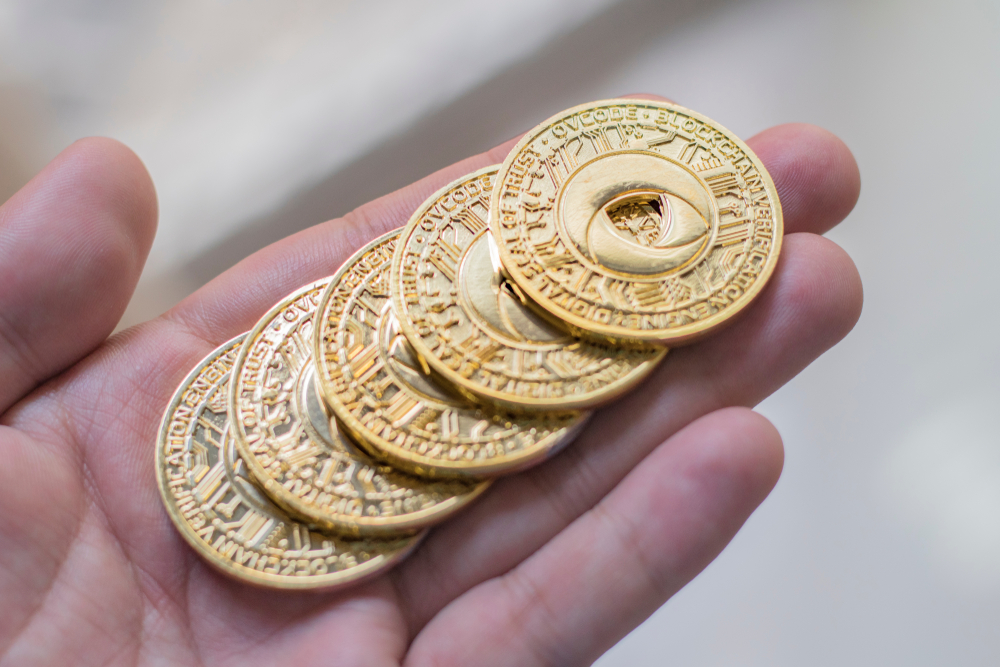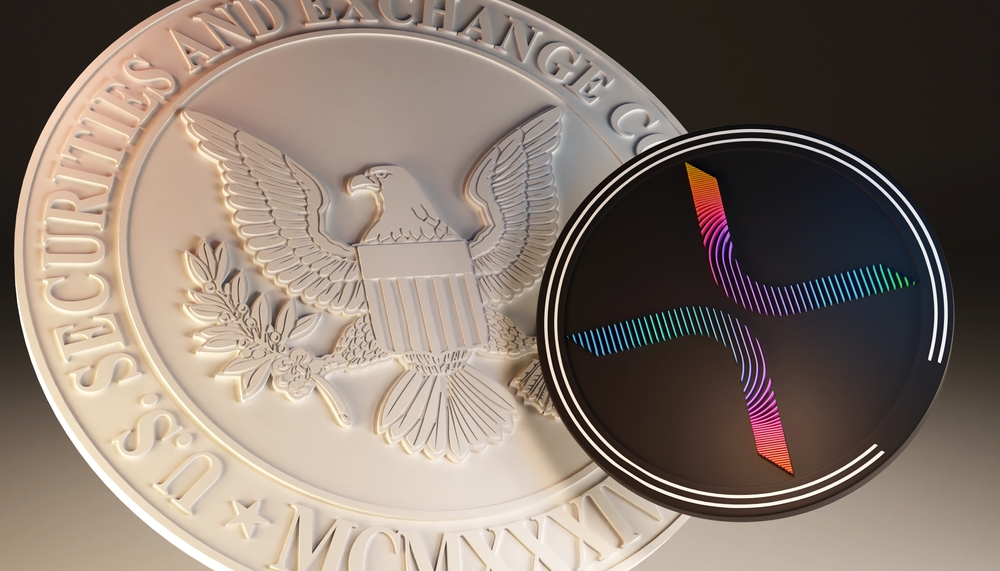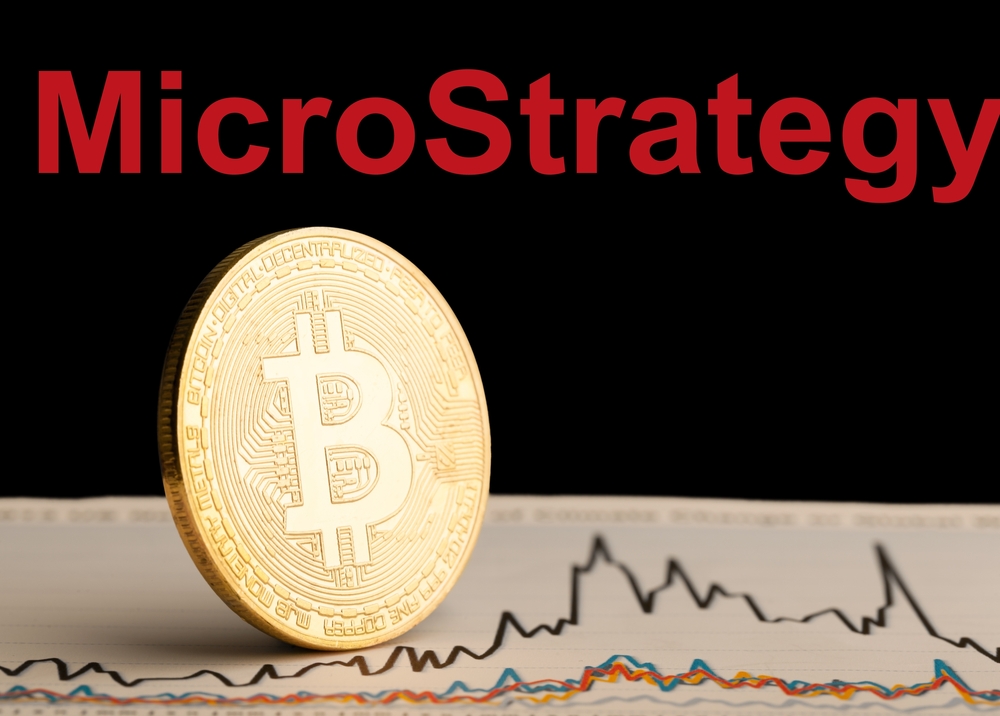In recent years, inflation has emerged as a pervasive challenge, eroding the purchasing power of traditional fiat currencies. Amidst growing concerns over this economic phenomenon, cryptocurrency projects have gained attention for their potential to provide alternative value storage mechanisms that may be more resistant to inflation. The unique proposition of cryptocurrencies lies in their limited supply, a feature that stands in stark contrast to the potentially unlimited printing of fiat money by central governments.
Crypto project DUCATA, established in 2021, is one such initiative that has positioned itself in the fight against inflation. Leveraging blockchain technology, DUCATA aims to create a digital currency that is not only secure, but also operates independently of traditional inflationary pressures. By design, the project endeavors to establish a new economic model that mitigates the impact of inflation on the currency’s value, thus fostering investor confidence in a landscape marked by market volatility.
Table of Contents
ToggleKey Takeaways
- Cryptocurrencies like DUCATA offer an alternative to traditional money by aiming to be less susceptible to inflation.
- DUCATA utilizes blockchain technology to create a secure and decentralized financial option for individuals concerned about the loss of purchasing power.
- The project seeks to mitigate traditional economic concerns, providing a fresh investment landscape and contributing to the evolution of global economies.
Understanding Inflation and its Economic Impact
Inflation directly influences the purchasing power of consumers and the value of money within an economy, with central banks playing a pivotal role in its management.
The Concept of Inflation
Inflation is an economic phenomenon characterized by a sustained increase in the general price level of goods and services in an economy over a period of time. When the general price level rises, each unit of currency buys fewer goods and services, thus reflecting a reduction in the purchasing power of money. A commonly used gauge for inflation is the Consumer Price Index (CPI), which measures the average change over time in the prices paid by consumers for a market basket of consumer goods and services.
Inflation Rate Factors
Several factors can influence the inflation rate, including:
- Demand-Pull Inflation: This occurs when aggregate demand in an economy outpaces aggregate supply.
- Cost-Push Inflation: When the costs of production rise, often due to increased prices for raw materials, businesses pass on these costs to consumers.
- Money Supply: An increase in the supply of money in relation to the amount of goods and services available can lead to inflation, as there is more money chasing the same number of goods.
Fiat currencies, which are not backed by physical commodities, can be particularly susceptible to inflationary pressures due to the potential for overexpansion of the money supply by the government.
Roles of Central Banks
Central banks, such as the Federal Reserve in the United States, are tasked with regulating the money supply and maintaining inflation rates within a target range. They employ various tools to manage inflation:
- Interest Rate Adjustments: By raising interest rates, central banks can slow down the amount of money that is borrowed and spent, which can help curb inflation.
- Open Market Operations: Central banks can buy or sell government securities to expand or contract the amount of money in the banking system.
- Reserve Requirements: Changing the amount of funds that banks must hold in reserve can influence the ability of banks to create money through lending.
These actions by central banks are crucial in stabilizing the economy and keeping inflation at manageable levels.
Historical Context and the Emergence of Cryptocurrencies
Understanding the historical context is essential in grasping how cryptocurrencies like Bitcoin emerged as alternatives to traditional currency, particularly in responding to economic phenomena like inflation.
The Birth of Bitcoin
Bitcoin was introduced in 2009 as a response to the financial crisis of 2008. It represented a groundbreaking shift in how currency could be managed and the avoidance of centralized control. The creator, known under the pseudonym Satoshi Nakamoto, leveraged blockchain technology to facilitate secure, transparent transactions.
Cryptocurrency Market Growth
Since the inception of Bitcoin, the cryptocurrency market has seen significant growth. By 2021, thousands of cryptocurrencies had been developed, each contributing to a diverse ecosystem offering various technological advancements and uses. This market expansion reflected a growing interest in cryptocurrencies as both speculative investments and potential hedges against traditional market volatility.
Cryptocurrencies as Digital Assets
Cryptocurrencies have become recognized as digital assets, their decentralized nature allowing for a reduction in certain types of financial intermediaries. As assets, cryptocurrencies are often lauded for their potential to act as a safeguard against inflation, as their supply, unlike that of fiat currencies, is generally not controlled by any central authority.
DUCATA’s Mission Against Inflation
In the face of rising inflation, DUCATA presents a steadfast approach, aiming to safeguard purchasing power through strategic cryptocurrency design and adoption.
DUCATA’s Inflation Hedge Strategy
DUCATA employs a robust inflation hedge strategy to mitigate the erosive effects of inflation on currency value. By utilizing a decentralized blockchain framework, it offers an alternative financial instrument that stands apart from traditional fiat currencies which are susceptible to inflationary pressures.
Economics of a Fixed Supply
DUCATA’s monetary policy is anchored in the principle of a fixed supply. With a predetermined cap on the number of tokens in circulation, it introduces scarcity, a key characteristic that contributes to its utility as a hedge against inflation. This limited supply contrasts with the often inflationary nature of fiat currencies, which can be printed in unlimited quantities.
Market Adoption and Confidence
For DUCATA’s anti-inflationary features to effectively function, market adoption and trust are critical. The project emphasizes transparency and security to foster confidence among users. As adoption grows, so does the network’s robustness, reinforcing DUCATA’s position as a credible inflation hedge.
The Investment Perspective
In the landscape of cryptocurrency investments, DUCATA proposes a stance against inflation, drawing attention from those wary of traditional market volatilities.
Investor Interest in Anti-Inflationary Assets
Investors are increasingly vigilant about the diminishing purchasing power of currency due to inflation. The allure of crypto projects like DUCATA lies in their potential to serve as anti-inflationary assets. These digital currencies are crafted to be less susceptible to the erosion of value that typically affects fiat currency, making them attractive to investors seeking to preserve wealth.
Comparison with Traditional Hedges
When considering hedges against inflation, traditional investors often turn to assets like gold and real estate. These have a history of functioning as reliable stores of value. However, crypto projects like DUCATA offer an alternative by providing digital scarcity, which can potentially offer insulation from inflation similar to gold, but with the added benefits of increased liquidity and divisibility.
Risk Management for Investors
Despite their potential as hedges, crypto assets also carry their own set of risks. The stock market and real estate investments have well-charted risk profiles, with extensive historical data available for analysis. Investors considering projects like DUCATA must practice stringent risk management, including diversification and continuous market analysis, to mitigate the potential downsides in this relatively nascent asset class.
The Role of Cryptocurrencies in Global Economies
Cryptocurrencies are increasingly significant in global economics, affecting markets and monetary systems. Their decentralized nature offers solutions in emerging markets, during political instability, and challenges traditional monetary systems.
Cryptocurrency and Emerging Markets
Cryptocurrencies are providing an alternative to traditional banking in emerging markets, where access to standard financial services can be limited. With mobile phones widely used, they offer critical financial inclusion without the need for a physical banking infrastructure. In some emerging economies, cryptocurrencies act as a hedge against inflation, with Bitcoin often being compared to digital gold due to its finite supply, in contrast to fiat money supply which can be prone to devaluation through inflation.
Cryptocurrencies in Times of Political Instability
During periods of political instability, populations often seek to secure their wealth in assets that are less likely to be affected by government policies or forfeiture. Cryptocurrencies, by design, are not controlled by any single entity, offering a form of wealth storage that can cross borders and resist censorship. For example, in countries experiencing hyperinflation or economic sanctions, cryptocurrencies can be used to preserve purchasing power and facilitate transactions.
Influence on Traditional Monetary Systems
Traditional monetary systems are being challenged by cryptocurrencies’ ability to operate outside of government control. As digital assets are not bound by the same rules as fiat currency, they can enable financial activities without the same level of regulation, potentially disrupting how central banks manage money supply and inflation. While this presents risks, it also encourages innovation in the financial sector, with central banks exploring the creation of their own digital currencies to maintain their monetary influence.
Technological Foundations and Security
In this examination of the DUCATA project, we focus on the robust technological underpinnings that safeguard against inflation, and the integral security framework that instills trust.
Blockchain Technology Explained
Blockchain serves as the backbone of DUCATA, leveraging its decentralization to prevent any single entity from manipulating the currency supply. Each transaction is recorded chronologically and publicly, ensuring transparency and reducing the potential for inflationary interference. Notably, blockchain’s immutable ledger makes Ethereum‘s smart contracts possible, which DUCATA may utilize to automate and secure transactions without the need for intermediaries.
Security Measures and Trust
DUCATA places a heavy emphasis on security to foster trust within its community. The project employs advanced cryptographic techniques to secure the wallets and transactions of its users. Moreover, its consensus mechanism requires validation from multiple parties, which makes fraudulent activities extremely challenging. By integrating these layered security measures, DUCATA aims to provide a fortified digital currency platform that its users can rely on.
Data Integrity and Cryptography
At the core of DUCATA’s defense against threats is its cryptography, which ensures the integrity of data as it traverses the blockchain. Each block contains a cryptographic hash, making any alteration of transaction data virtually impossible without being detected. This cryptographic seal, combined with the distributed nature of the blockchain, means that data integrity is meticulously maintained, contributing to the system’s overall resilience to inflationary pressures and unauthorized alterations.
Decentralized Finance (DeFi) and Crypto Projects
In the realm of blockchain technology, Decentralized Finance (DeFi) has heralded a new era of financial empowerment by leveraging crypto assets. DeFi tokens and community-led initiatives like DUCATA offer alternatives to traditional financial systems.
What is Decentralized Finance?
Decentralized Finance, or DeFi, represents a shift from centralized financial systems to peer-to-peer finance enabled by decentralized technologies built on the Ethereum blockchain. DeFi platforms allow users to lend, borrow, trade, and access a wide spectrum of financial services without the need for traditional financial intermediaries, using crypto assetsas the principal medium of exchange.
The Rise of DeFi Tokens
DeFi tokens serve multiple purposes within decentralized applications (dApps), from governance to utility functions. They often reflect the value of their respective DeFi protocols and act as both investment vehicles and facilitators of decentralization. Unlike fiat currencies, these tokens are integral to the DeFi ecosystem, playing a pivotal role in functions such as liquidity provision and yield farming.
- Governance tokens enable holders to vote on protocol decisions.
- Utility tokens may provide discounted fees on dApp services.
Community-Led Financial Systems
The essence of DeFi lies in its community-led approach. DeFi protocols are typically governed by decentralized autonomous organizations (DAOs), where token holders vote on decisions that affect the protocol. This democratic approach aims to create a financial system that is open to anyone, regardless of location or financial status. DUCATA, for example, may aspire to mitigate the impact of inflation by utilizing a decentralized network to maintain stable purchasing power of crypto assets.
Socio-Economic Effects of Crypto Adoption
The adoption of cryptocurrencies is reshaping socio-economic landscapes globally. It influences diverse areas, from societal structures to individual consumer behavior, challenging traditional financial systems.
Adoption Impact on Society
Cryptocurrency adoption can significantly alter societal norms, particularly in countries like Venezuela and Argentina, where economic volatility and rampant money printing have led to considerable inflation. In these regions, crypto offers an alternative to unstable local currencies, enabling citizens to preserve their purchasing power and conduct transactions without the fear of sudden currency devaluation.
Cryptocurrencies and Consumer Behavior
The introduction of cryptocurrencies has a profound impact on consumer behavior. As digital assets, they facilitate a more direct and transparent transaction process. In the wake of COVID-19, with increased consumer pricesensitivity, cryptocurrencies offer an attractive option for consumers seeking to avoid bank account fees and conduct contactless payments securely.
Disruption of Traditional Banking
Cryptocurrencies are poised to disrupt traditional banking systems. They provide unbanked individuals access to financial services without the need for a conventional bank account, altering the dynamics of financial inclusion. The ease of setting up a digital wallet circumvents the necessity of a physical banking presence, which could be transformative in remote or underbanked areas.
Market Volatility and Investor Confidence
In the dynamic environment of cryptocurrency, projects like DUCATA are tackling inflation amid market turmoil. This section delves into the intricacies of such volatility and how confidence is built and maintained.
Volatility in the Cryptocurrency Market
The cryptocurrency market is known for its high volatility, with prices that can fluctuate wildly within short periods. Factors contributing to this include regulatory news, technological advancements, and changes in investor sentiment. This volatility is often measured by the degree of price variation over time. For example, DUCATA may experience sharp rises and falls in price in response to bearish macro trends or black swan events – unpredictable occurrences with potentially severe consequences.
Building Confidence in Volatile Markets
Confidence in volatile markets is bolstered through transparent operations, strong project fundamentals, and consistent communication from teams behind cryptocurrency projects. DUCATA’s approach in providing a hedge against inflation aims to reassure investors, who rely on advisors and detailed market analysis to make informed decisions. By demonstrating resilience and a clear vision, even in the face of market uncertainty, a crypto project can cultivate a stable investor base.
Strategies for Navigating Market Uncertainty
Investors and their advisors employ a variety of strategies to navigate market uncertainty. These include diversifying portfolios, setting stop-loss orders to limit potential losses, and following long-term investment strategies rather than short-term speculation. Projects like DUCATA may introduce mechanisms to reduce volatility, such as maintaining liquidity reserves or implementing governance protocols that allow for agile responses to market changes. Through such strategic planning, investors can better manage risks associated with cryptocurrency investments.
Crypto Project Challenges and Future Outlook
In light of the novel Crypto project DUCATA’s ambitions to combat inflation, it’s important to understand the project’s trajectory and the obstacles it may face. The crypto landscape is rapidly evolving and presents both challenges and opportunities for developers and investors alike.
Regulatory Hurdles and Compliance
Crypto project DUCATA must navigate a complex web of regulations that vary by jurisdiction. Developers must balance innovation with legal compliance, a significant challenge as governments around the world are still grappling with how to regulate cryptocurrencies. Changes in regulation can have immediate effects on a project’s operations and its acceptance as a mainstream financial tool. Adhering to these regulations, especially those aimed at preventing money laundering and protecting investors, is crucial.
Scalability and Future Developments
For cryptocurrency projects to succeed, they must be able to scale effectively. DUCATA faces the challenge of managing network emissions, ensuring fast transaction times, and maintaining low costs as the user base grows. As the cryptocurrency industry matures, technological advancements and innovative solutions like layer-2 protocols or new consensus mechanisms could dramatically influence DUCATA’s scalability and its future viability.
Cryptocurrency as a Mainstream Financial Instrument
The path to mainstream acceptance for cryptocurrencies involves demonstrating not only stability and utility but also tangible benefits over traditional fiat currencies. DUCATA must address concerns surrounding cryptocurrencies, such as volatility and security, to gain widespread acceptance. Building trust with users and positioning itself as a viable hedge against inflation will be paramount for DUCATA in solidifying its role in the future of the financial landscape.
Frequently Asked Questions
In the context of inflation and cryptocurrency, DUCATA’s project aims to offer solutions to preserve value and maintain purchasing power.
How does DUCATA aim to combat inflation?
DUCATA seeks to mitigate the effects of inflation by using a decentralized monetary policy that limits its supply, mimicking the scarcity-driven value preservation seen in traditional assets like gold.
What mechanisms does DUCATA employ to maintain its value during inflationary periods?
During periods of inflation, DUCATA utilizes algorithms to adjust its supply and uses smart contracts to facilitate stability, aiming to ensure that its purchasing power isn’t eroded.
Can DUCATA be considered a stablecoin, and how does it compare to other stablecoins as an inflation hedge?
DUCATA functions similarly to a stablecoin, but it also incorporates features specifically designed to shield against inflation, setting it apart from other stablecoins that are often pegged to fiat currencies susceptible to inflationary decay.
What are the economic principles that enable DUCATA to resist inflationary pressures?
The economic principles behind DUCATA are based on the concept of supply and demand equilibrium, monetary policies to control the circulating supply, and maintaining a reserve to stabilize against market fluctuations.
How does the performance of DUCATA correlate with traditional CPI measurements?
DUCATA’s performance aims to inversely correlate with traditional Consumer Price Index (CPI) measurements by appreciating or maintaining value when CPI indicates rising inflation.
Does DUCATA offer any unique benefits over other cryptocurrencies in the context of preserving purchasing power?
DUCATA differentiates itself from other cryptocurrencies through its focused approach on inflation resistance, using a suite of financial strategies and technologies to strive for increased stability in purchasing power.






















